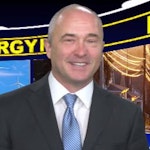Chevron develops Carbon Capture project at San Joaquin Cogeneration plant
Chevron U.S.A. is developing a carbon capture and storage (CCS) project through its Chevron New Energies division at the Kern River Eastridge cogeneration plant in California.
The project is aimed at reducing carbon intensity, which is the amount of CO2 emitted per unit of energy produced. The firm will install CO2 post-combustion capture equipment at Kenr River plant operations in San Joaquin Valley, California.
“At Chevron, we believe the future of energy is lower carbon. Reducing the carbon intensity of the energy people rely on day-in and day-out is well-aligned with the ambitions of the Paris Agreement,” said Chris Powers, vice president of Carbon Capture, Utilization, and Storage (CCUS) for Chevron New Energies. “We are excited about the opportunity to collaborate and progress this CCS initiative in San Joaquin Valley, a region where we have lived and worked for over a century.”
For the project, the firm has applied for a Conditional Use Permit with the Planning and Natural Resources Department of Kern County. Chevron will continue to work with regulators on the process.
Additionally, Chevron is evaluating the deploying carbon capture technology demonstrations to enable future projects.
“As Chevron advances to a lower carbon future, we’re identifying ways to advance our operations as well, so we can continue to provide local jobs, support the local economy, and generate local government revenue that supports critical community services,” said Molly Laegeler, vice president, San Joaquin Valley (SJV), Chevron. “We are excited about this Chevron New Energies project and fostering continued collaboration with local regulators throughout this process, not only to position the region to benefit from these lower carbon solutions, but that we continue to protect people and the environment. We believe this project has the potential to benefit the region on many levels and that Kern County is an ideal location for carbon capture and storage.”
The firm is also exploring other methods to reduce carbon intensity at its San Joaquin Valley operations. These include the blending of hydrogen and natural gas in combustion and using geothermal energy.
Kern River Cogeneration is a 300-MW gas-fired turbine power plant originally completed in 1985. It was built for generating power into the Southern California Edison system.
Fluor was the engineering, procurement and construction contractor on Kern River Cogeneration. Chevron is fuel provider for the plant






